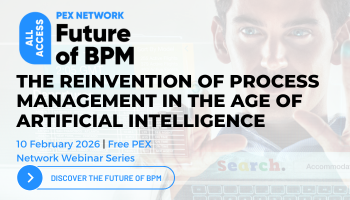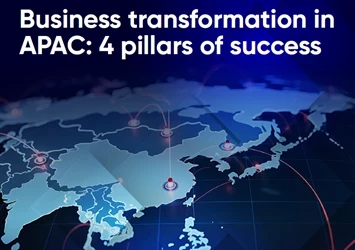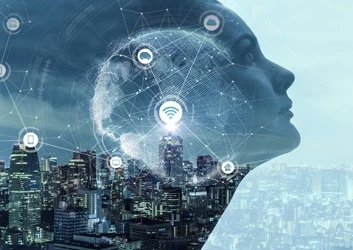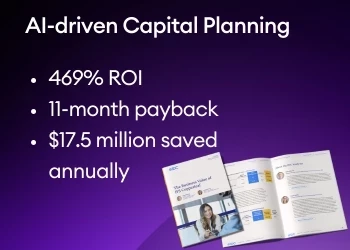The future of circular processes: Integrating resale & reuse into operational models
Circular processes are becoming crucial as businesses seek sustainable solutions
Add bookmark
As businesses shift towards more sustainable operational models, integrating resale and reuse is becoming a key strategy for reducing waste and extending product lifecycles. This approach not only addresses environmental concerns but also creates new revenue streams, engaging consumers who value sustainability.
The move towards circular processes is reshaping industries, offering vast potential for innovation and resource optimization.
Join the PEX Network community

Don't miss any news, updates or insider tips from PEX Network by getting them delivered to your inbox. Sign up to our newsletter and join our community of experts.
Learn MoreUnderstanding circular processes in today’s world
Circular processes are becoming crucial as businesses seek sustainable solutions. By focusing on resale and reuse, companies can reduce waste significantly. Transitioning from linear to circular models is necessary to address today’s environmental challenges.
Defining resale and reuse within circular models
Incorporating resale and reuse into business models means products gain extended lifecycles. Resale involves selling pre-owned items that are intact or refurbished. Reuse, on the other hand, refers to finding new purposes for items that might otherwise be discarded.
By adopting these practices, businesses can decrease waste and promote sustainability. Many companies are now creating platforms for consumers to easily buy and sell used products. This encourages the circulation of goods, extending their usability.
Key benefits:
- Reduction in environmental footprint.
- Cost savings for consumers and businesses.
- Increased customer engagement.
Shifting away from traditional linear approaches
Historically, businesses followed a linear “take, make, dispose” model, generating excessive waste. Shifting to circular processes involves rethinking product design and distribution, focusing on disassembly and recycling to conserve resources and reduce environmental impact.
Steps to transition:
- Evaluate product lifecycle.
- Invest in eco-friendly materials.
- Collaborate with stakeholders.
Key drivers of the circular economy movement
Several factors propel the circular economy forward. Environmental awareness and stricter regulations drive sustainability, while businesses see economic benefits in reduced material costs and new revenue streams from resale markets.
Technology innovation supports these efforts by enabling efficient recycling processes and better product tracking. Companies can harness data to optimize their circular processes and create value.
Drivers include:
- Consumer demand for eco-friendly products.
- Regulatory pressures for sustainability.
- Advancements in recycling technology.
Join us at All Access: BPM Business Process Management 2025!
Integrating resale and reuse into business operations
Integrating resale and reuse into business operations demands innovative thinking. It’s about redefining supply chains, embedding new platforms and transforming product designs to enhance longevity and sustainability.
Updating supply chains for circularity
To foster circularity, updating supply chains is crucial. Focus on transparency and traceability, ensuring every product’s journey is clear from production to resale.
You can optimize resource use by integrating recycled materials, which supports sustainability goals. A shift towards flexible logistics with multi-directional flows allows products to return for refurbishing or resale.
Additionally, collaborating with suppliers who share your values can streamline processes. Embracing technology, such as the internet of things (IoT) and blockchain, enhances data accuracy, making supply chain management more efficient and sustainable.
Embedding resale platforms and services
Embedding resale platforms into your business extends product life and increases value retention. By creating direct online marketplaces or collaborating with effective platforms, such as The Alloy Market, you can tap into the rising demand for pre-owned items.
Provide incentives, like discounts or loyalty programs, to encourage participation. Consider streamlining services that support resale initiatives such as repair, refurbishment and repackaging. For example, customers can sell gold jewelry securely online for cash, guaranteeing a hassle-free experience.
To meet customer demand, ensure processes are seamless and user-friendly. By focusing on customer experience, you encourage brand loyalty and repeat engagement with pre-owned products.
Transforming product design for longevity
Product design is key to supporting resale and reuse. Incorporate modularity for easy upgrades and disassembly to extend product life. Prioritize durable materials and integrate sustainability into every design decision, aligning with eco-conscious values.
Real-world Success stories and practical solutions
Circular processes have been adopted in various industries, showcasing successful resale and reuse strategies in fashion, electronics and community initiatives.
Fashion and apparel
Fashion giants are adopting circular models. Patagonia is a standout, launching its Worn Wear program. This initiative encourages customers to trade used garments, fostering a culture of reuse. The program not only extends the life of clothing but also promotes customer engagement by offering incentives like store credits.
Another notable example is H&M. Through its Garment Collecting program, customers can drop off unwanted clothing in stores. This collected clothing is then recycled or resold, diverting significant textile waste from landfills. Both brands illustrate how integrating circular practices can enhance brand loyalty while reducing environmental impact.
Consumer electronics
In the world of electronics, Apple showcases a forward-thinking approach to circular processes. With its Apple Trade In program, customers can return used devices for credit towards future purchases. Damaged devices are also accepted for responsible recycling, preventing e-waste.
Fairphone presents an even more comprehensive model by designing modular smartphones. This approach allows consumers to easily replace parts rather than buying new devices. Fairphone combines ethical material sourcing with a strong resale market, providing a sustainable alternative in a traditionally waste-heavy industry.
Community-based reuse initiatives
Local communities are at the forefront of reuse initiatives, with projects like Repair Cafés gaining traction globally. In these volunteer-run events, people come together to fix broken items, ranging from bikes to electronics, instead of discarding them. This not only reduces waste, but also fosters skill-sharing and community bonds.
Another impactful project is the Library of Things. Here, individuals can borrow items they occasionally need, such as tools or kitchen equipment, promoting efficient resource use. These initiatives empower communities to pursue sustainable lifestyles and minimize consumption by emphasizing the importance of sharing and collaboration.
Register for All Access: AI in Business Transformation 2025!
Looking ahead: Opportunities and challenges
The future of circular processes offers the potential for integrating resale and reuse across industries, with technological innovations playing a key role. However, challenges remain in adopting these models.
Scaling circular solutions across industries
Industries are increasingly recognizing the value in circular solutions, but scaling these efforts presents unique challenges. Retail, manufacturing and electronics sectors are exploring new models that prioritize resale and reuse. These industries must redesign their operational models to incorporate sustainable practices effectively.
For example, the apparel industry is investing in resale platforms that enable brands to reclaim and resell their products. Automotive companies are exploring component reuse and remanufacturing, aiming to minimize waste and maximize efficiency. As more industries jump on board, you’ll see a shift towards holistic operational strategies that consider the product lifecycle from beginning to end.
Technological innovations shaping the future
Technology plays a pivotal role in advancing circular processes. The emergence of blockchain ensures traceability and authenticity in product lifecycles, fostering trust in resale markets. Innovative software aids inventory management, making it easier to track and allocate resources efficiently.
Artificial intelligence (AI) and machine learning offer predictive insights into consumer behavior, helping to anticipate market trends and optimize resale strategies. IoT devices monitor product usage and condition, offering data-driven insights to further enhance resale and reuse efforts. These technologies work together to create an ecosystem that supports sustainable practices in the long run.
Overcoming barriers to resale and reuse adoption
Despite the appeal, barriers exist in adopting resale and reuse models. Cultural perceptions about second-hand goods, logistical hurdles and regulatory challenges can impede efforts. You may face consumer hesitance and concerns regarding quality and hygiene in resale markets.
Business models must foster consumer trust by ensuring quality assurance and transparent operations. Moreover, clear communication about circular benefits can help shift public perception. Companies must also navigate regulatory landscapes that differ by region, posing another challenge in scaling operations. By addressing these barriers, you’ll facilitate a smoother transition to sustainable operational models.
Integrating resale and reuse into business models presents a significant opportunity to foster sustainability and profitability. By adopting circular processes, companies can reduce waste, extend product lifecycles and create new revenue streams while meeting growing consumer demand for eco-friendly solutions.
However, overcoming challenges such as cultural perceptions and logistical barriers will be essential to scaling these practices effectively across industries. The future of circular models looks promising, with technological advancements and innovative strategies leading the way toward a more sustainable, resource-efficient world.
All Access: Future of BPM 2026

You asked, and we listened. Business process management (BPM) remains the cornerstone technology for driving organizational transformation, according to the survey results featured in the latest PEX Report. As we look toward 2026 and beyond, generative AI, agentic AI, and intelligent process orchestration are redefining how processes are designed, executed, and optimized. BPM is your key to adapting swiftly and effectively in this new era.
PEX Network is bringing together industry leaders, technology innovators, and thought leaders to answer your biggest questions and explore the advancements reshaping business today. And you're invited. Register for free to save your spot now!
Register Now























